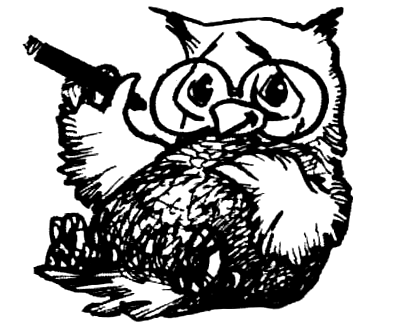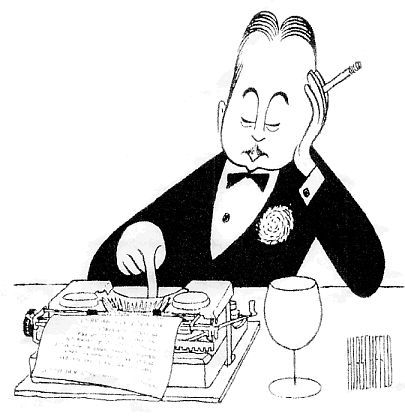A little study will be necessary before laying out the court. I mean you can’t just go out and mark a court by guess-work. You must first learn what the dimensions are supposed to be and get as near to them as is humanly possible. Whereas there might be a slight margin for error in some measurements, it is absolutely essential that both sides are the same length, otherwise you might end up by lobbing back to yourself if you got very excited.
The worst place to get the dope on how to arrange a tennis-court is in the Encyclopædia Britannica. The article on TENNIS was evidently written by the Archbishop of Canterbury. It begins by explaining that in America tennis is called “court tennis.” The only answer to that is, “You’re a cock-eyed liar!” The whole article is like this.
The name “tennis,” it says, probably comes from the French “Tenez!” meaning “Take it! Play!” More likely, in my opinion, it is derived from the Polish “Tinith!” meaning “Go on, that was not outside!”
During the Fourteenth Century the game was played by the highest people in France. Louis X died from a chill contracted after playing. Charles V was devoted to it, although he tried in vain to stop it as a pastime for the lower classes (the origin of the country-club); Charles VI watched it being played from the room where he was confined during his attack of insanity and Du Guesclin amused himself with it during the siege of Dinan. And, although it doesn’t say so in the Encyclopædia, Robert C. Benchley, after playing for the first time in the season of 1922, was so lame under the right shoulder-blade that he couldn’t lift a glass to his mouth.
This fascinating historical survey of tennis goes on to say that in the reign of Henri IV the game was so popular that it was said that “there were more tennis-players in Paris than drunkards in England.” The drunkards of England were so upset by this boast that they immediately started a drive for membership with the slogan, “Five thousand more drunkards by April 15, and to Hell with France!” One thing led to another until war was declared.
The net does not appear until the 17th century. Up until that time a rope, either fringed or tasseled, was stretched across the court. This probably had to be abandoned because it was so easy to crawl under it and chase your opponent. There might also have been ample opportunity for the person playing at the net or at the “rope,” to catch the eye of the player directly opposite by waving his racquet high in the air and then to kick him under the rope, knocking him for a loop while the ball was being put into play in his territory. You have to watch these Frenchmen every minute.

